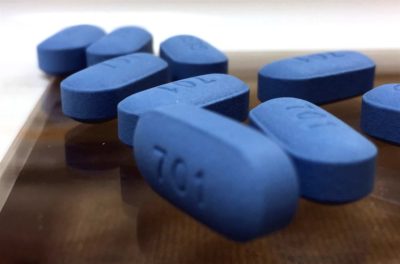July 16, 2018

Study: In 24 countries, 62% of antibiotics are sold without prescriptions. CDDEP Research Fellow Dan Morgan and colleagues have published a meta-analysis showing that in 24 countries, 62% percent of antibiotics dispensed to patients were purchased without a prescription. Among the regions studied, South America had the highest percentage (78%) of non-prescription sales of antibiotics. Fluoroquinolones and penicillins were the two antibiotic groups most dispensed without a prescription. The countries with the highest frequency of non-prescription antibiotic sales were Indonesia (91%), Syria (87%), Saudi Arabia (85%), and Ethiopia (85%). [Journal of Infection]
Findings on antibiotic resistance uncover harrowing death toll for infants in North India. In a study covering neonates with sepsis in North India, alarming levels of antibiotic resistance were found in patients born both in and outside of hospitals. In Chacha Nehru Baal Chikitsalaya (CNBC), Delhiʻs largest children’s hospital, as many as 63% of admitted patient neonatal deaths were due to infection. Infected neonates, whether born in hospitals or at home, presented with some level of antibiotic resistance, indicating the presence and acquisition of antibiotic-resistant bacteria in the community. Researchers attributed the high levels of infection among neonatal patients to poor infection control and indiscriminate use of antibiotics. [PLoS One, Times of India]
Screening of 3,000 paired substances nets possible new antibiotics. Scientists at the European Molecular Biology Laboratory screened 3,000 combinations of antibiotics and other molecules in search of new clinical therapies. Testing the ability of the paired substances to kill three types of pathogenic bacteria in vitro (Escherichia coli, Salmonella enterica serovar Typhimurium and Pseudomonas aeruginosa), the researchers found over 500 combinations that demonstrated enhanced antibiotic effectiveness which may eventually be safely used in clinical settings to combat multi-drug resistant organisms. [Nature, ScienceDaily, EurekAlert, Newsy]
Communities with less frequent mass antibiotic distributions for trachoma had lower rates of resistance in nasopharyngeal bacteria. A study in Niger was undertaken to determine the relative effect of annual versus biannual mass administration of azithromycin, a macrolide antibiotic, on the human nasopharyngeal macrolide resistome. Individuals were swabbed at zero and 24 months for the presence of genetic resistance markers ermB and mefA/E in the nasopharyngeal passages. Median prevalence of the genes before treatment was 20% in each group. In the twelve communities that received four doses over two years, the median prevalence of resistance rose to 60%, compared to a median of 40% carriage in the twelve communities that received only two doses. [Infectious Disease Advisor, Clinical Infectious Diseases]
Injectable HIV prophylaxis could prevent more cases than oral PrEP; concerns about other sexually transmitted infections remain. A new study shows an injectable form of a pre-exposure prophylaxis (PrEP) HIV drug could be more successful than the daily oral version in preventing HIV transmission in networks of men who have sex with men. In either formulation, PrEP is controversial, as some believe its adoption will lead to riskier sexual practices including reduced condom use, followed by outbreaks of other sexually transmitted infections (STIs), and the spread of drug resistant genes and pathogens. As Australia has recently added costly PrEP coverage to its Pharmaceutical Benefits Scheme, some advocates have called for closer monitoring of PrEP users and campaigns to promote the continued use of condoms by individuals taking PrEP. [The Lancet HIV, PressFrom, Sydney Morning Herald]
Proposed changes in collection of hospital safetydata bring a debate to the forefront. A new proposal from the US Centers for Medicare and Medicaid Services (CMS) which could take effect as early as November, 2018 would change the way that US hospitals report cases of post-operative sepsis, surgical site infections following colon operations or hysterectomy, Clostridium difficile, methicillin-resistant Staphylococcus aureus, and other important measures of patient safety. Instead of reporting the data to the Inpatient Quality Reporting Program, hospitals would report to a Hospital Associated Condition Reduction Program. [USA TODAY, Leapfrog, ACSH]
New “immunobiotic” shows initial promise in fighting Gram-negative bacteria. Borrowing from techniques used in cancer immunotherapy, researcher Marcos Pires and colleagues at Lehigh University recently developed a new drug to fight bacteria. The drug, made by combining colistin and epitopes that stimulate the immune system, attaches to the surface of a bacterial cell, destroys it, and sends signals that cause an immune response. Because the body’s own immune cells are involved, it is less likely that bacteria will develop resistance to the new drug. [Smithsonian Magazine, Cell Chemical Biology, Phys.org]
Inoculum Effect: Potential evidence of range in allowable inoculum affecting lab test results. Antibiotic susceptibility assays test the effectiveness of antibiotic treatment in hospital patients to ensure appropriate treatment and avoid the development of antibiotic resistance. In a recent study, researchers found that when testing within the allowable range of target inoculum, test results varied. For one of the major drugs tested, minor error rates of 34.8% were observed. Study authors concluded that clinicians must be as close to the target inoculum as possible to obtain accurate results and prevent further antibiotic resistance. [EurekAlert, Antimicrobial Agents and Chemotherapy]
Photo credit: NIAID











